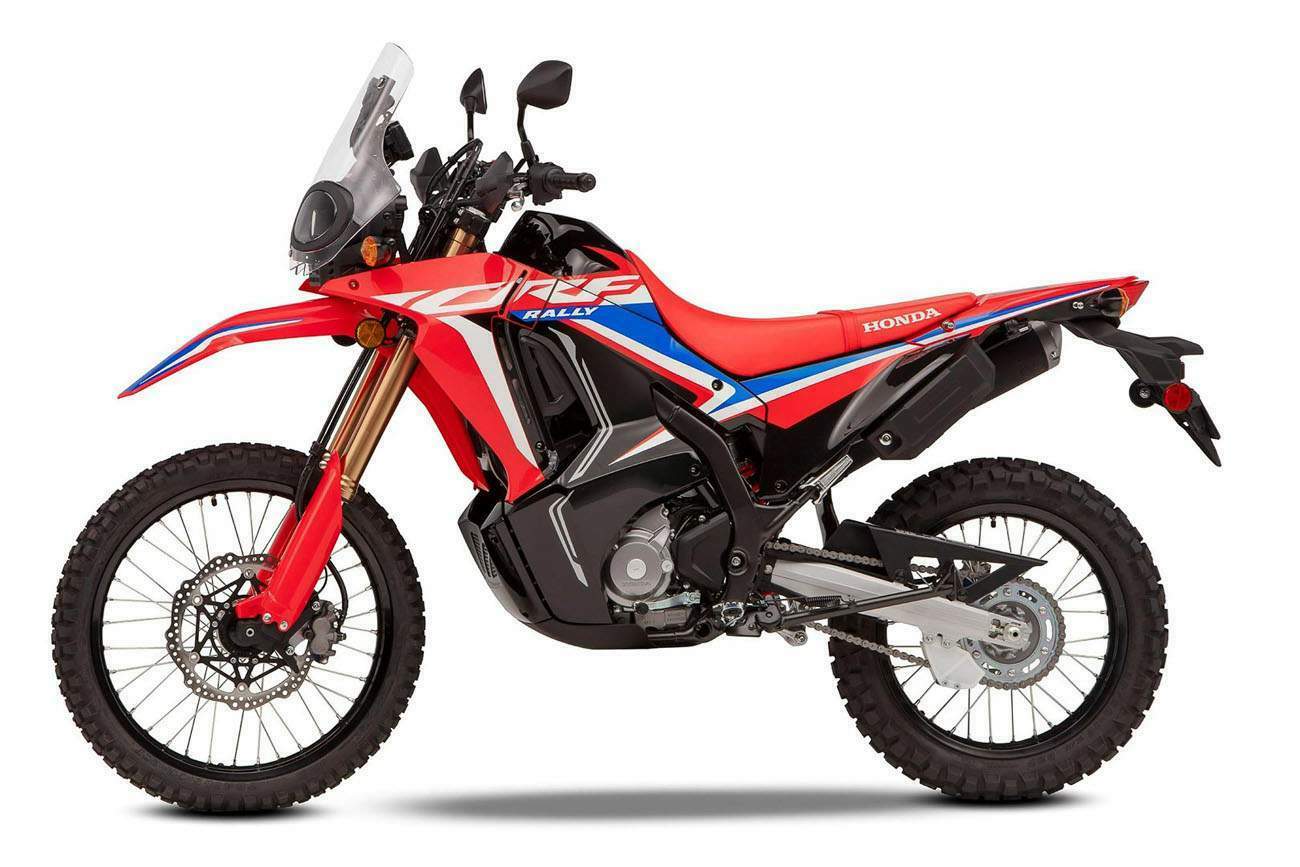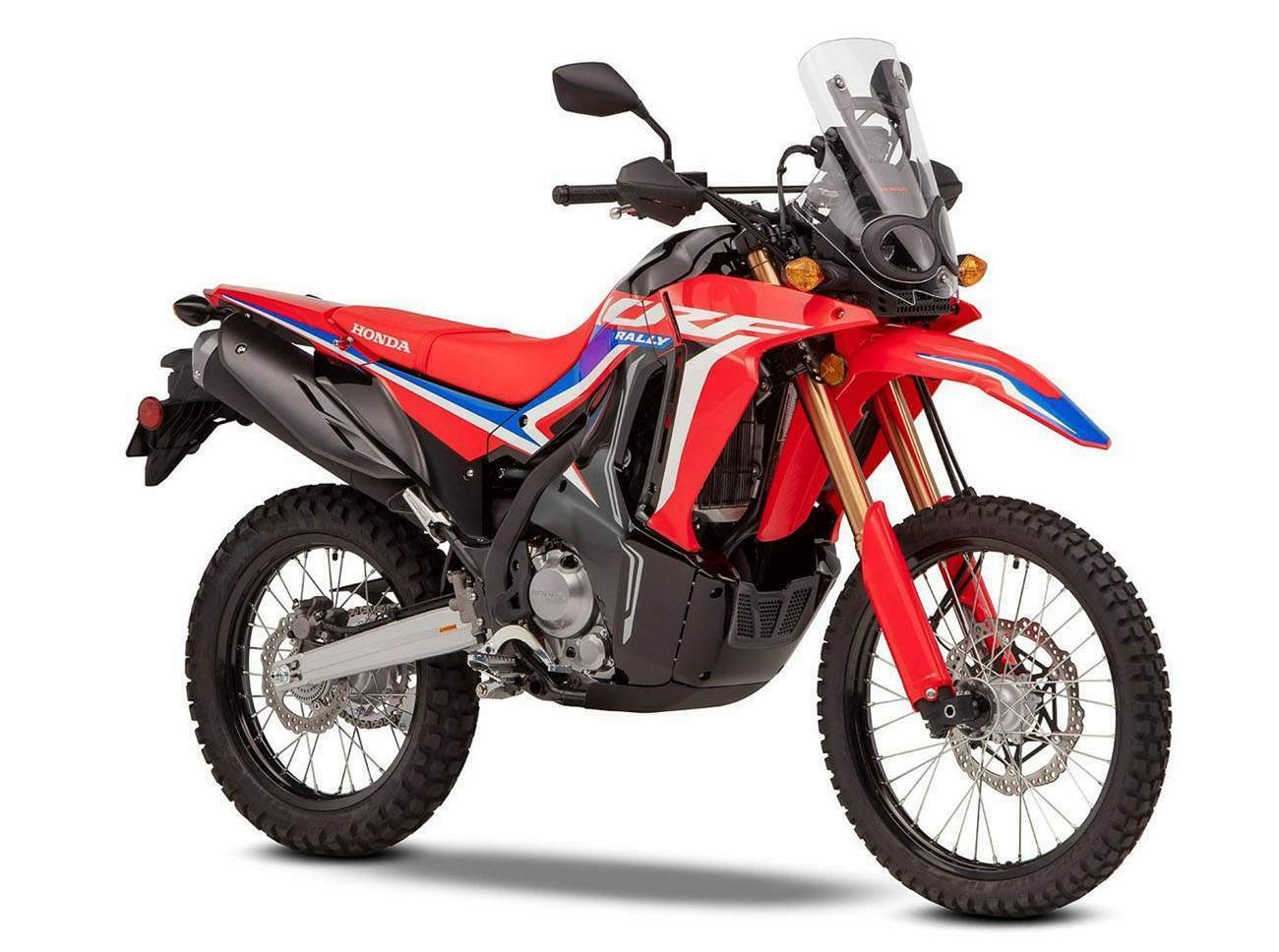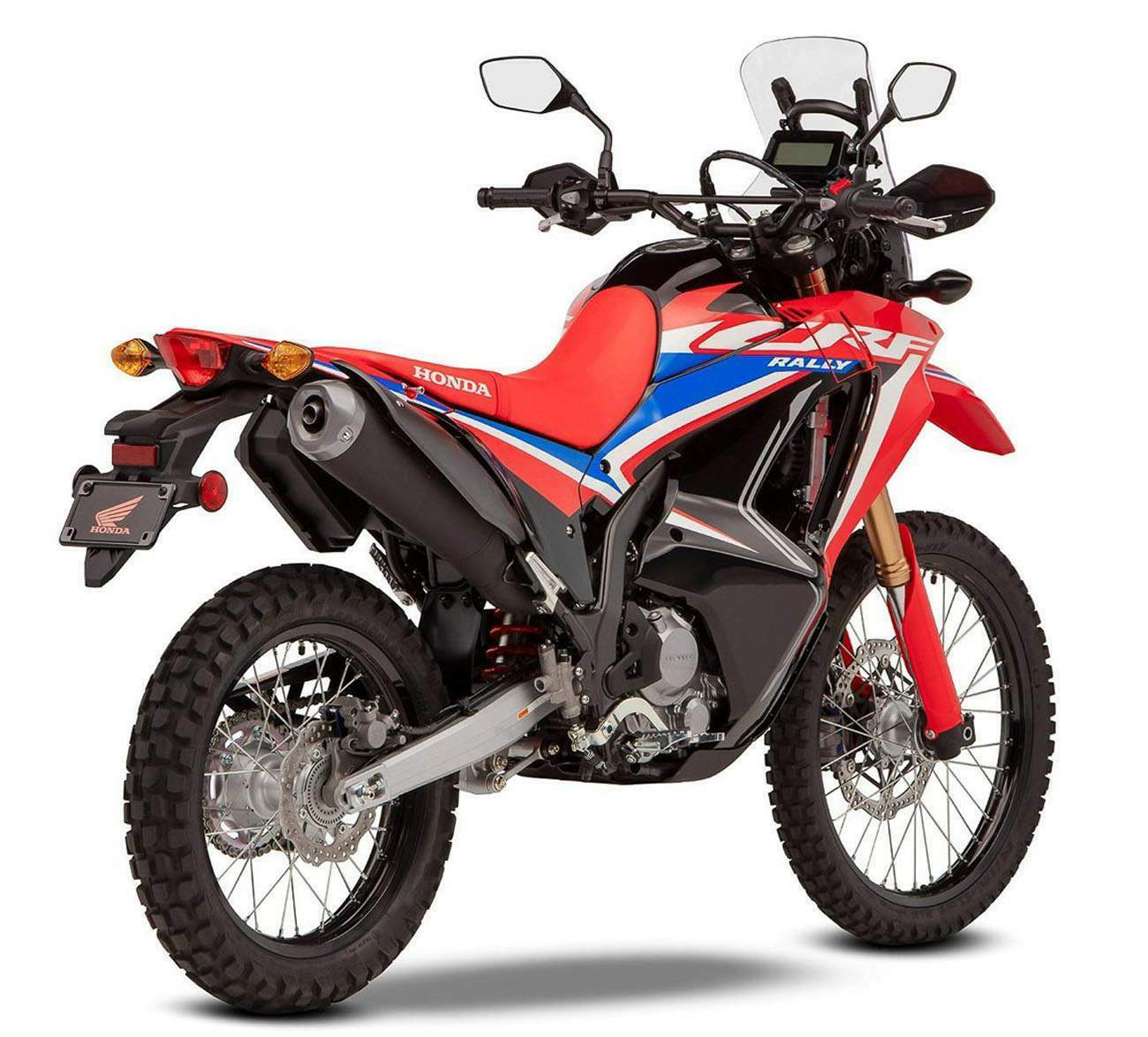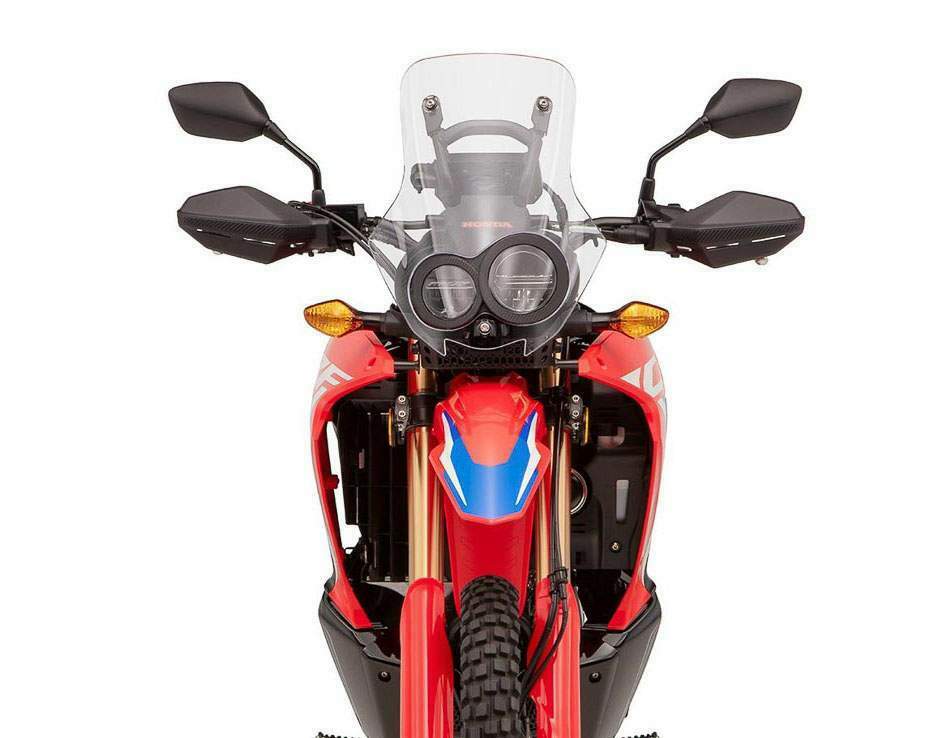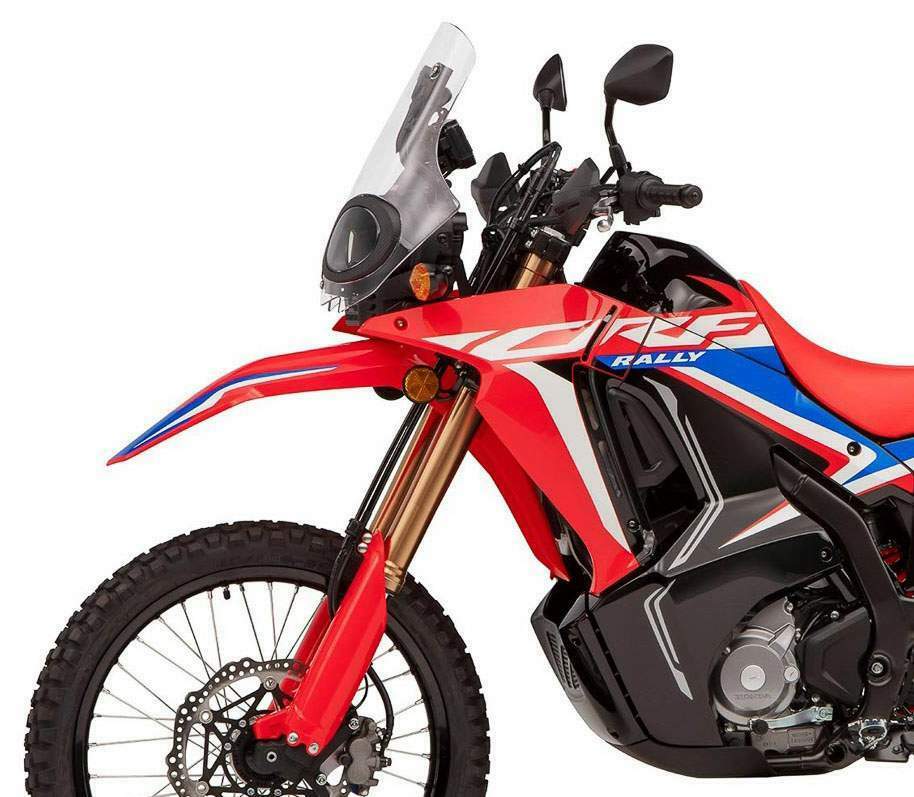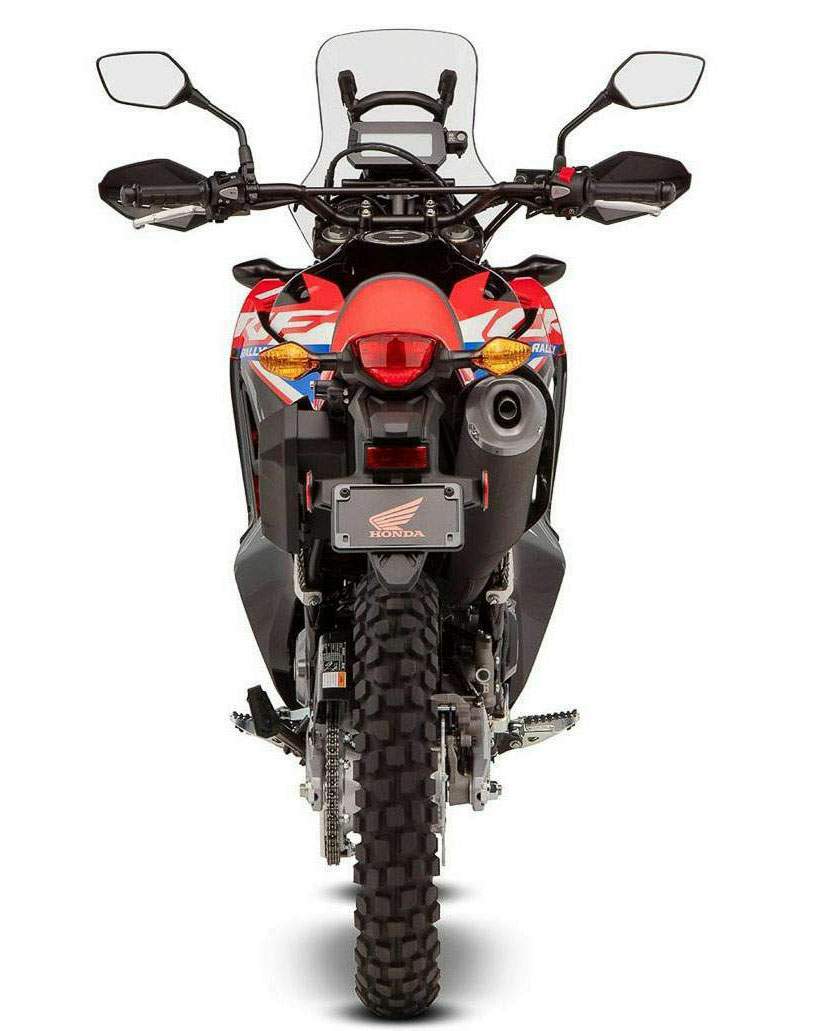| . |
|
Make Model |
Honda CRF 300 Rally |
|
Year |
2021 |
|
Engine |
Four stroke single cylinder, DOHC, 4 valves |
|
Capacity |
286 cc / 17.4 cu-in |
| Bore x Stroke | 76 x 63 mm |
| Cooling System | Liquid cooled |
| Compression Ratio | 10.7:1 |
| Lubrication | Wet sump |
|
Induction |
PGM-FI electronic fuel injection |
| Emission | |
|
Ignition |
Full transistor digital |
| Starting | Electric |
|
Max Power |
27 hp / 20.1 kW @ 8500rpm |
|
Max Torque |
26.6 Nm / 19.6 lb-ft @ 6500rpm |
| Clutch | Wet multiplate, assist/slipper clutch |
|
Transmission |
6 Speed |
| Final Drive | #520 chain |
| Frame | Steel semi-double cradle |
|
Front Suspension |
43mm Telescopic USD forks |
|
Rear Suspension |
Pro-Link single shock with spring |
|
Front Brakes |
Single 296mm disc 2 piston caliper |
|
Rear Brakes |
Single 220mm disc 1 piston caliper |
| ABS | 2 channel ABS |
| Wheels | Aluminium spoke |
|
Front Tyre |
80/100-21M/C 51P |
|
Rear Tyre |
120/80-18M/C 62P |
| Rake | 27.5° |
| Trail | 109 mm / 4.3 in |
| Dimensions |
Length: 2230 mm / 87.7 in Width: 920mm / 36.2 in Height: 1415 mm / 55.7 in |
| Wheelbase | 1455 mm / 57.2 in |
| Seat Height | 885 mm / 34.8 in |
| Ground Clearance | 275 mm / 10.8 in |
|
Wet Weight |
153 kg / 337.3 lbs |
|
Fuel Capacity |
12.8 Litres / 3.3 US gal |
| . |


